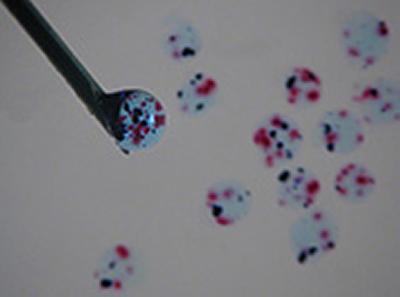From the dust – mixing stem cells with clay to regenerate human tissue

Gels made from clay could provide an environment that would stimulate stem cells to regenerate damaged tissues such as bone, skin, heart, spinal cord, liver, pancreas and cornea.
Researchers at the University of Southampton believe that clay particles’ ability to bind to biological molecules could be used to stimulate the stem cell regeneration process.
Dr Jon Dawson, who is leading the research, explains: “Clay particles encourage molecules to bind to them. This interaction is now routinely harnessed in the design of tablets to carefully control the release and action of a drug. We will use this mechanism to see if we can encourage stem cells to grow new tissue.”
The project, funded by a £1.4m grant from the Engineering and Physical Sciences Research Council (EPSRC), aims to create tailormade micro-environments to foster stem cell regeneration. The team will use clay gels both to explore the biological signals necessary to successfully control stem cell behaviour for regeneration and also to provide stem cells with signals to stimulate regeneration in the body.
The approach will first be applied to regenerate bone lost to cancer or hip replacement failure. If successful the same technology may be applied to harness stem cells for the treatment of a whole host of different scenarios, from burn victims to those suffering with diabetes or Parkinson’s.
Dr Dawson will be working with Professor Richard Oreffo of the Bone and Joint Research Group at the University of Southampton to explore the application of this technology in orthopaedics. “Fractures and bone loss due to trauma or disease are a significant clinical and socioeconomic problem,” Dr Dawson comments. “Clay particles could offer an improved way of stimulating stem cells at the point of injury, which will be better for the patient’s recovery.”
Dr Dawson believes that the rich electrostatic properties of nano scale clay particles, which are one millionth of a millimetre, could overcome two challenges in the development of stem-cell based regenerative therapies.
The first challenge – to deliver and hold stem cells at the right location in the body – would be met by the ability of clay to self-organise into gels via the electrostatic interactions of the particles with each other. Cells mixed with a low concentration of clay particles gelled in water, can be injected into the body and held in the right place by the gel, eliminating, in many situations, the need for surgery.
Clay particles can also interact with large structural molecules (polymers) which are frequently used in the development of scaffolds, which stem cells grow on. These interactions can greatly improve the scaffold’s strength and could be applied to preserve their stability at the site of injury until regeneration is complete.
While several gels and scaffold materials have been designed to deliver and hold stem cells at the site of regeneration, the ability of clay nanoparticles to overcome a second critical hurdle facing stem-cell therapy is what makes them especially exciting.
Dr Dawson says: “The carefully controlled provision of key biological signalling molecules is essential to directing the activity of stem-cells. However, conventional injectable gel materials are often poor at retaining these biological signals at the site of injury – they can hold and deliver cells, but the molecules that stimulate the cells diffuse away when placed in the body. The ability of clay nanoparticles to bind biological molecules presents a unique opportunity to control the local environment at a site of injury or disease to stimulate and control stem-cell driven repair. This is something we are very excited about.”